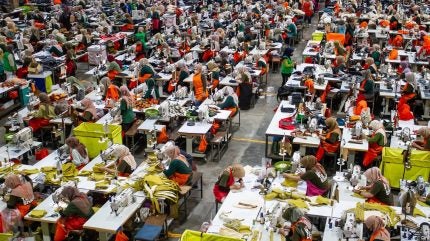
This initiative is part of Indonesia’s strategy to prevent the imposition of increased tariffs on its exports to the US market.
Despite the US proposing an initial tariff rate of 32% on Indonesian goods, which does not include the standard 10% duty, Indonesia Coordinating Economic Minister Airlangga Hartarto has indicated the final rate might be even higher.
Hartarto was quoted by local news publication Jakarta Globe as saying: “The range is between 10 and 37%, so the maximum tariffs facing Indonesia can be 10+10 or 10+37.
“These tariffs will certainly increase the costs of our exports to the US.”
He added: “We want a level playing field. Tariffs on Indonesian products are still higher compared to those imposed on similar goods from other ASEAN countries.”
During a web-based briefing from the US, the minister expressed Indonesia’s anticipation that key exports such as textiles, footwear, furniture, and shrimp would receive equitable tariff rates comparable to those imposed on similar products from other nations.

US Tariffs are shifting - will you react or anticipate?
Don’t let policy changes catch you off guard. Stay proactive with real-time data and expert analysis.
By GlobalDataIn exchange, the Southeast Asian country has proposed collaboration in areas such as access to essential minerals and improved bilateral cooperation across various sectors including trade, investment, energy, finance, defence, and education.
Last week, a delegation from Indonesia engaged in a succession of high-level discussions with trade representatives in Washington, DC, to negotiate mitigation of the substantial tariff increases enacted by US President Donald Trump’s administration.
The meetings concluded without reaching a formal accord. The delegation was headed by Hartarto, who also communicated that additional negotiation sessions are anticipated to take place in the coming two months.
Indonesian Fiber and Filament Yarn Producers Association (APSyFI) general chairperson Redma Wirawasta has evaluated that the three-month delay on the implementation of reciprocal tariffs could serve as a critical window for the government to pursue alterations in tariff policy through diplomatic channels.
According to APSyFI, trade statistics from January to February 2025 indicate that Indonesia achieved a trade surplus of $3.14bn with the US. This surplus was largely due to exports in two categories: knitted clothing and accessories (under Harmonized System code 61), which amounted to $433.3m, and footwear (HS 64), totalling $407.7m. Among Indonesia’s primary export goods to the US market, knitted clothing commodities rank second.
To further mitigate potential trade disruptions, Indonesia is expediting trade agreements with additional partners. Efforts are underway to finalise the protracted negotiations for the Indonesia-EU Comprehensive Economic Partnership Agreement (CEPA), which commenced in 2016, according to the news portal.
Hartarto also reported advancements in discussions with Australia. To expand its trade horizons further, Indonesia is seeking Australia’s endorsement to help it gain more comprehensive access to markets under the Comprehensive and Progressive Agreement for Trans-Pacific Partnership (CPTPP), which counts Mexico and several South American countries among its members.
Navigate the shifting tariff landscape with real-time data and market-leading analysis. Request a free demo for GlobalData’s Strategic Intelligence here.




